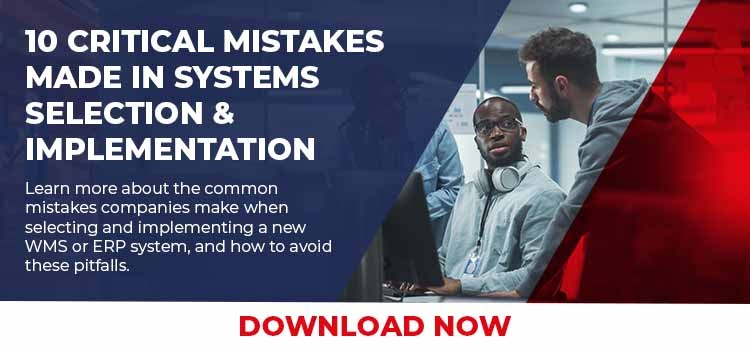One of the most important aspects of selecting any order management system is actually getting a demo of the vendor’s application. There are a couple of different approaches to demos; depending on where you are in the system selection process. One is used to get the general feel for a system early in the search process and lasts one to two hours. What you get is a high-level overview of a few of the system’s functions.
of the vendor’s application. There are a couple of different approaches to demos; depending on where you are in the system selection process. One is used to get the general feel for a system early in the search process and lasts one to two hours. What you get is a high-level overview of a few of the system’s functions.
The second type of demo, which is what the focus of this post is about, is much longer taking a day or possibly a day and a half; depending on the complexity of your business. This longer demo is used to select the finalists after vendors have responded to your Request For Proposal (RFP).
Remember, the job of the salesman is to show you the strengths of the order management system they are selling. Your job is to make sure that you have done your due diligence to determine which system fits your business best. In working with our clients on hundreds of order management system and warehouse management system projects, we have found the most effective way to make that determination is to literally script what it is that you want the vendor to demonstrate.
Here are some guidelines for writing and managing scripted system vendor demos:
-
Who are the key department users? They should prepare a list of specific items or functionality they want the vendor to demonstrate from the RFP responses (e.g., promotion set-up, blanket purchase orders, item master, quantity price break discounts, etc.).
-
Start with your user requirements. What were the essential functions that you needed? Which do you think are unique to your business? These may be loyalty clubs, discounting, carrier rate shopping, bill-me-later, product numbering schemes, etc.
-
Make sure that the vendor has your media (catalogs, inserts, Website URLs, etc.) and uses data that you have prepared to demo their system. Dummied-up customer records, products, and SKUs, different discount options (free freight; buy one, get one free), kitting/de-kitting, product numbering, length of fields (e.g., name, address, SKU).
-
Write out a literal script and a time agenda, including the order of topics to be demoed. If you don’t conduct the demos in the same way and following the same sequence, you won’t be able to compare one system to another. This is a major reason for taking control of the demo. You should recognize that of course the vendor has his own agenda—ask for it in advance, view it, and only use that portion of it that benefits the system selection process. Let me give you an example. Vendors always want to start with a detailed background of their business. You do need to understand the company, its market, who the installed customer base is, and so on. But can’t you do that over the phone or through Webinars? Remember that you are doing the demo after presenting your requirements and receiving a response back from the vendor. The vendors who are going to conduct these demos are already on the short list.

-
Assign a "scribe" to document the key pluses and minuses of each order management system as well as vendor follow-up items. Department users should be responsible for keeping track of any changes, follow-up items, or feature/function that appears to be a strength or weakness. Don’t rely on the vendor to take the notes. Don’t think that you will remember or be able to recall what you saw after the fact.
-
Use the demo to validate the vendor responses in the RFP. You should go through any major requirements that you questioned or didn’t understand, or any for which you want to see how the function works.
-
Update the RFP response with any changes or new impressions based on the demo.
-
Mark results on a score card. After the vendor leaves, get the participants together to score their impressions on each functional area, A through F, and enter key observations on a form. For what functions do key users need more explanation? What are their concerns?
-
Follow up with a memo to vendors of items they agreed to research, and include any outstanding concerns and questions. Some questions may require an additional demonstration of a specific function or functions, this should be easily accommodated by the vendors through a Webinar.
The better prepared you are and the more firmly you take control of the demo, the better you can ensure that the order management system fits your business.






SHARE